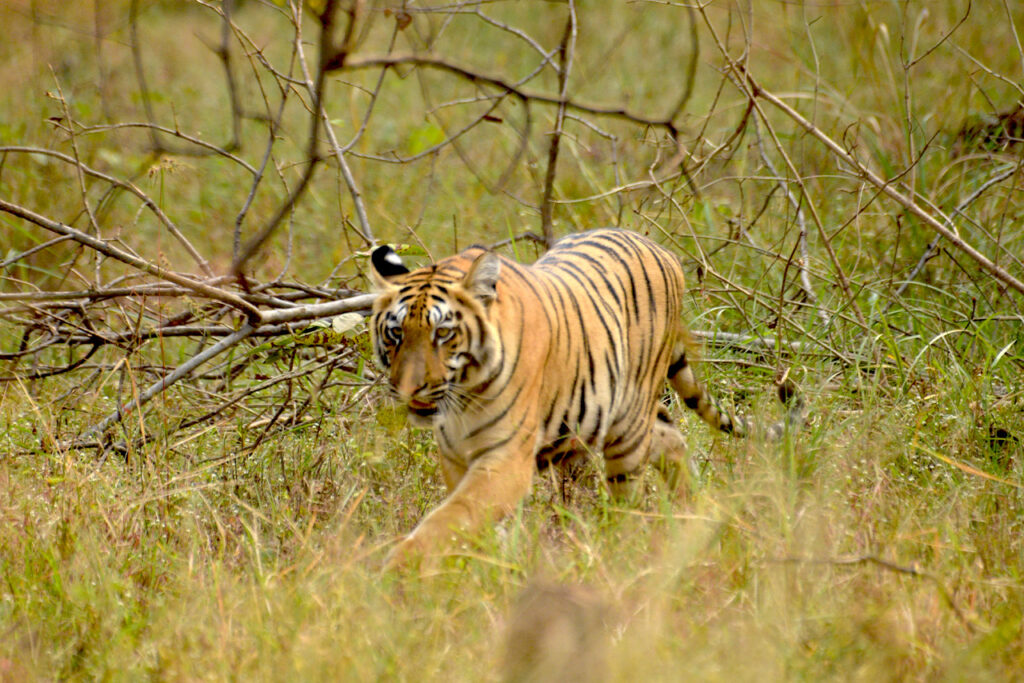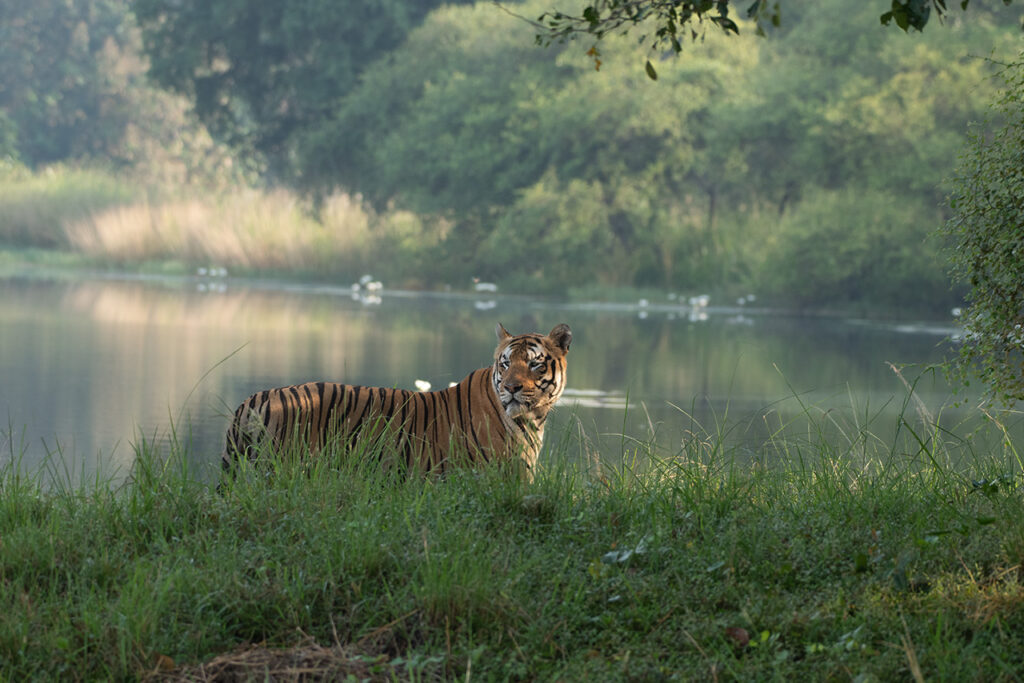Flora and Fauna In TATR
Flora and Fauna in Tadoba National Park
The Tadoba Andhari Tiger Reserve in Maharashtra is a famous sanctuary, spread over 625 square kilometers of southern tropical dry deciduous Forest. Known as the “Land of Tigers,” Tadoba National Park is famous for its rich Royal Bengal Tiger population and other wildlife species. But Tadoba’s diversity extends beyond tigers; its dense forests are home to over 140 unique plant species, ranging from tall trees to medicinal shrubs.
Home to rich habitats and a variety of mammals, birds, reptiles, and butterflies, wildlife lovers can also explore Flora and Fauna in Tadoba National Park providing with best packages like Tadoba Jungle Safari Packages and Tadoba Tour Packages that can be easily booked from visitors.
Flora in Tadoba Tiger Reserve
In this forest, teak and bamboo are the most common tree species. Other common trees include:
- Ain (Crocodile Bark)
- Bija
- Dhaudab
- Hald
- Salai
- Semal
- Shisham
- Sisoo
- Shivan
- Surya
- Sirus
- Tendu
- Beheda
- Bel
- Chichwa
- Dhawada
- Kusum
- Hirda
- Karaya Gum
- Mahua Madhuca (Crepe Myrtle)
- LanneaCoramandelica (Wodier Tree)
These trees not only form the park’s scenic backdrop but also support Tadoba’s complex ecosystem, offering shelter and sustenance to the animals in Tadoba.
Fauna in Tadoba Tiger Reserve
Tadoba National Park is famously home to the Bengal tiger, which has earned it a reputation as the best tiger reserve in India. However, the park also hosts a diverse array of other wildlife species:
- Indian Bison (Gaur)
- Leopard
- Sloth Bear
- Rusty Spotted Cat
- Wild Boar
- Spotted Deer
- Blue bulls
- Indian Pangolins
- Four-Horned Antelope
- Porcupines
These animals in Tadoba roam freely through the forests and grasslands, making it the best destination for wildlife lovers on a Tadoba tour package. Nocturnal animals like the Small Indian Civet and Flying Squirrel are also present, adding a unique dimension to Tadoba’s biodiversity.
Birds
Tadoba is a paradise for birdwatchers, with approximately 195 bird species recorded here. Visitors can spot Honey Buzzard, Crested Serpent Eagle, Paradise Flycatcher, and more. These birds in Tadoba contribute to the vibrant fauna in Tadoba and attract bird lovers from all over the world.
Few medicinal plants available in Tadoba Tiger Reserve are as follows:
Tadoba’s flora includes a variety of medicinal plants, which have been traditionally used for their healing properties. For instance:
- Kach Kujali (Velvet Bean) is commonly used in treatments for Parkinson’s disease.
- Bheria – its leaves serve as a natural insect repellent.
- Beheda – known for its medicinal uses in traditional remedies.
These plants add to the park’s ecological and medicinal significance, showcasing the richness of flora in Tadoba National Park.
Unique and Colorful Flora
Among Tadoba’s unique flora, the Axlewood (Anogeissus latifolia) stands out for its fire-resistant properties, which help preserve the forest’s structure during fire seasons. Additionally, the vibrant Butea monosperma (Flame of the Forest) blooms with striking red and orange flowers, adding bursts of colour to the forest floor.


Reptiles are another essential part of the fauna in Tadoba National Park, with species like the Indian Python, Russell’s Viper, Cobra, and various types of Terrapins. Tadoba’s wetlands and dense vegetation provide the perfect habitat for these species, helping to maintain a balanced ecosystem.
Tadoba’s diverse habitats support over 74 species of butterflies, including Monarchs, Mormons, and Pansies. Additionally, unique insects like the Danaid Egg-Fly, Jewel Beetles, and various spiders (such as the Signature Spider and Giant Wood Spider) are common, especially during the monsoon season.
The management of Tadoba National Park has implemented various conservation initiatives to protect its endangered species and preserve biodiversity. Efforts like anti-poaching measures, habitat protection, and community engagement programs play a crucial role in safeguarding flora and fauna in Tadoba. These actions ensure that the park remains a sustainable and thriving habitat for future generations.
The management of Tadoba National Park has implemented various conservation initiatives to protect its endangered species and preserve biodiversity. Efforts like anti-poaching measures, habitat protection, and community engagement programs play a crucial role in safeguarding flora and fauna in Tadoba. These actions ensure that the park remains a sustainable and thriving habitat for future generations.

